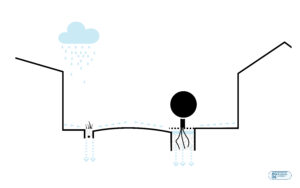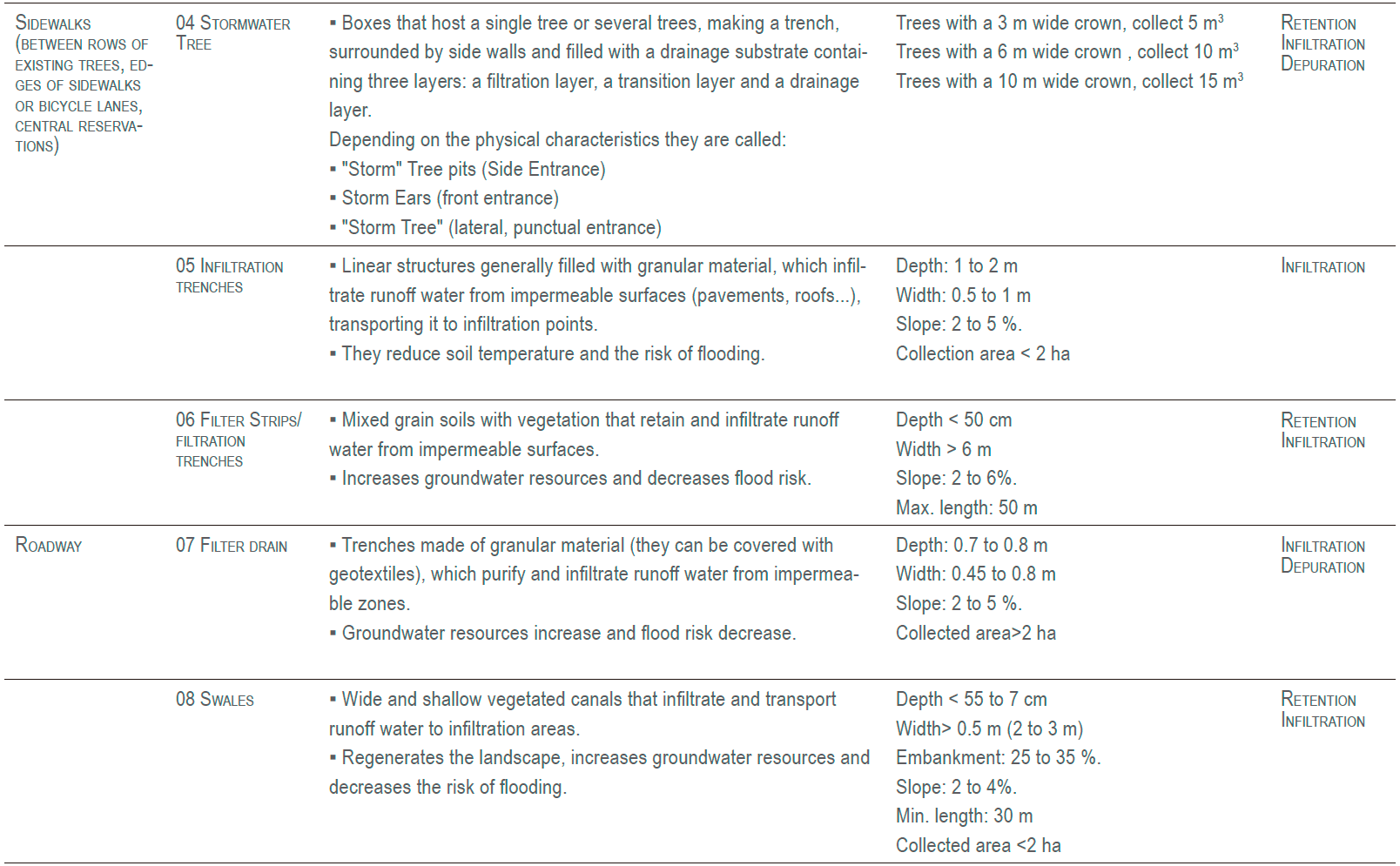AG06 WATER INFILTRATION IN THE STREET
Rainwater infiltration systems applied to urban design

Aim
Incorporate solutions for rainwater retention and infiltration both in new urbanizations and in renovations, for streets and other public spaces.
Why?
To mitigate the effects of climate change through design, moderating the rise in the temperature of the planet and the waste of energy and water resources. They bring the following benefits:
– Improvement of the environmental comfort by regulating temperature and humidity.
– Reduction of the heat island effect due to the evaporation of water accumulated in the subsoil.
– Reduction of flooding due to torrential rains by increasing permeable surfaces.
– Decrease of the volumes of runoff and peak flows that end up in the network of collectors and the treatment plant to avoid overloading the sanitation infrastructure.
Integration of rainwater treatment into the urban landscape.
– Protect water quality by reducing the effects of diffuse pollution.
– Improve the health of urban vegetation.
– They generate social benefits by creating attractive meeting and leisure spaces.
How?
The solution means to transform current rainwater collection, which seeks the quick evacuation of urban runoff using a system of impermeable surfaces and gutters connected to the sewers, into a network that retains and infiltrates the water from urban runoff through a group of elements based on nature that, when they work together, manage to infiltrate significant volumes of water into the subsoil.

 Diagram of water retention and infiltration elements in the street
Diagram of water retention and infiltration elements in the street

Street scale intervention

ISSUES AFFECTED
Combinación con outras solucións
MEASURE ELEMENTS
Indicator
Reduction of energy consumption by infiltration or capture of rainwater (∆CE)
Second indicator
% of permeable pavement in the street / total m2 of street
Unit
m2 of permeable pavement on the street→ ∆CE
Minimum goal
>60%
Objetivo deseable
>95%
Método de medición / Formula
(I1) ΔCE = [A x B]
A: m3 (infiltrated)
B: Energy consumption in MWh per m3 treated at the WWTP
(I2) % = [A / B]
A: m2 of permeable pavement
B: total area
PLANNING LEVEL
Urban planning
Public space projects (parking spaces, roads)
AGENTS INVOLVED
Local administration technicians
Provincial/general administration Technicians
natural spaces or water resources agents
Possible actions promoted by the administration
– Replace as many m2 of impermeable soil as possible with permeable soil in the processes of urbanization and maintenance of the road and public space, through a urban restoration plan.
– To compile a database on the infiltration characteristics of the terrain and a mapping of the most favourable sites for its implementation.
– Minimize loss of drainage capacity through good maintenance
– Develop a database of species and substrates best suited to local characteristics
What should we consider for its implementation?
– The presence of underground services, such as fiber optics, electrical and telephone cables, or drainage pipes.
– Maintenance and cleaning management of public space.
– Selection of suitable substrates and plant species is critical to the success of bio-retention facilities. Soil characteristics should be chosen to support drainage, considering contaminant removal rates, and plant viability. Plantations should include a diverse community of native species.


















